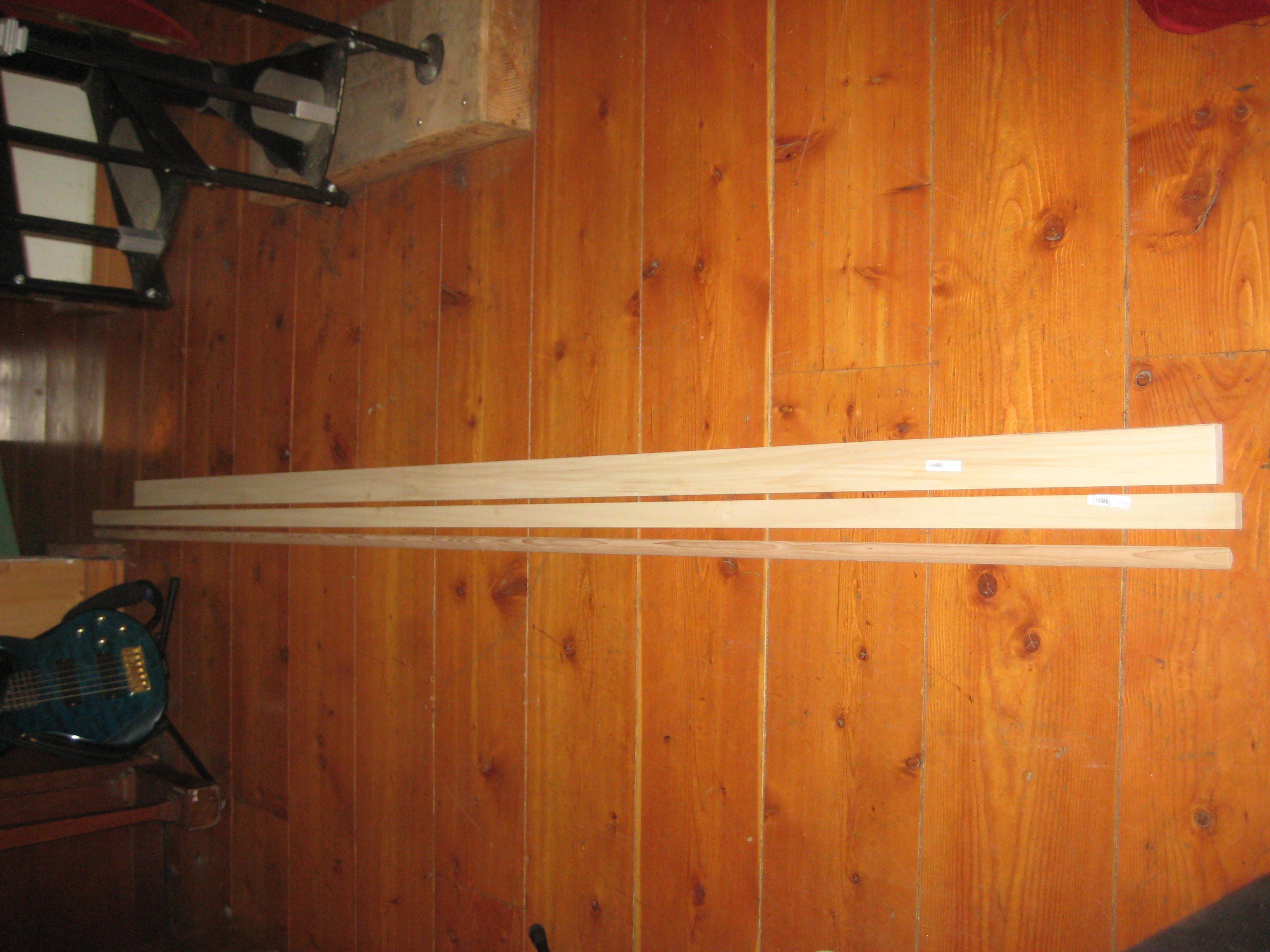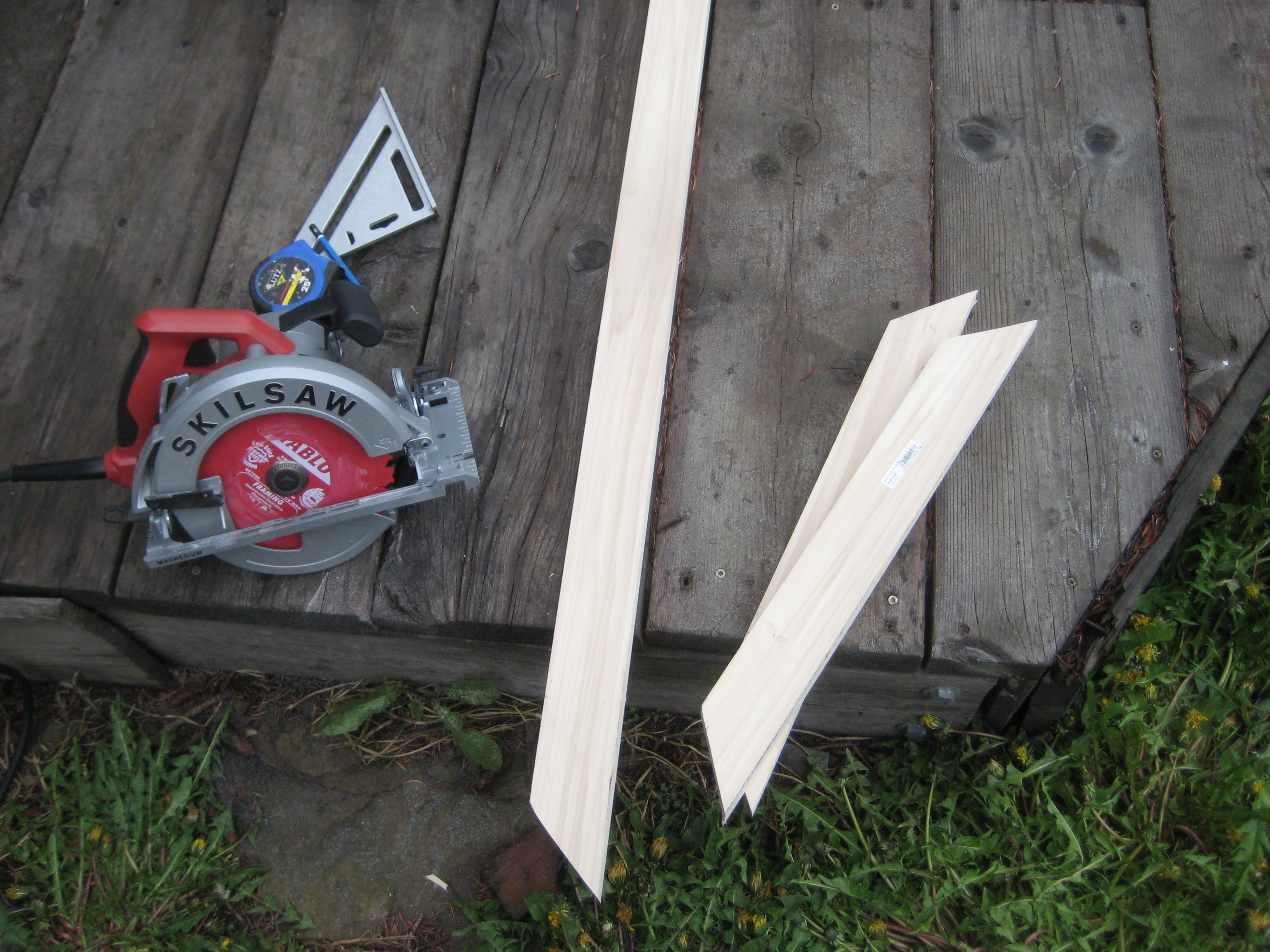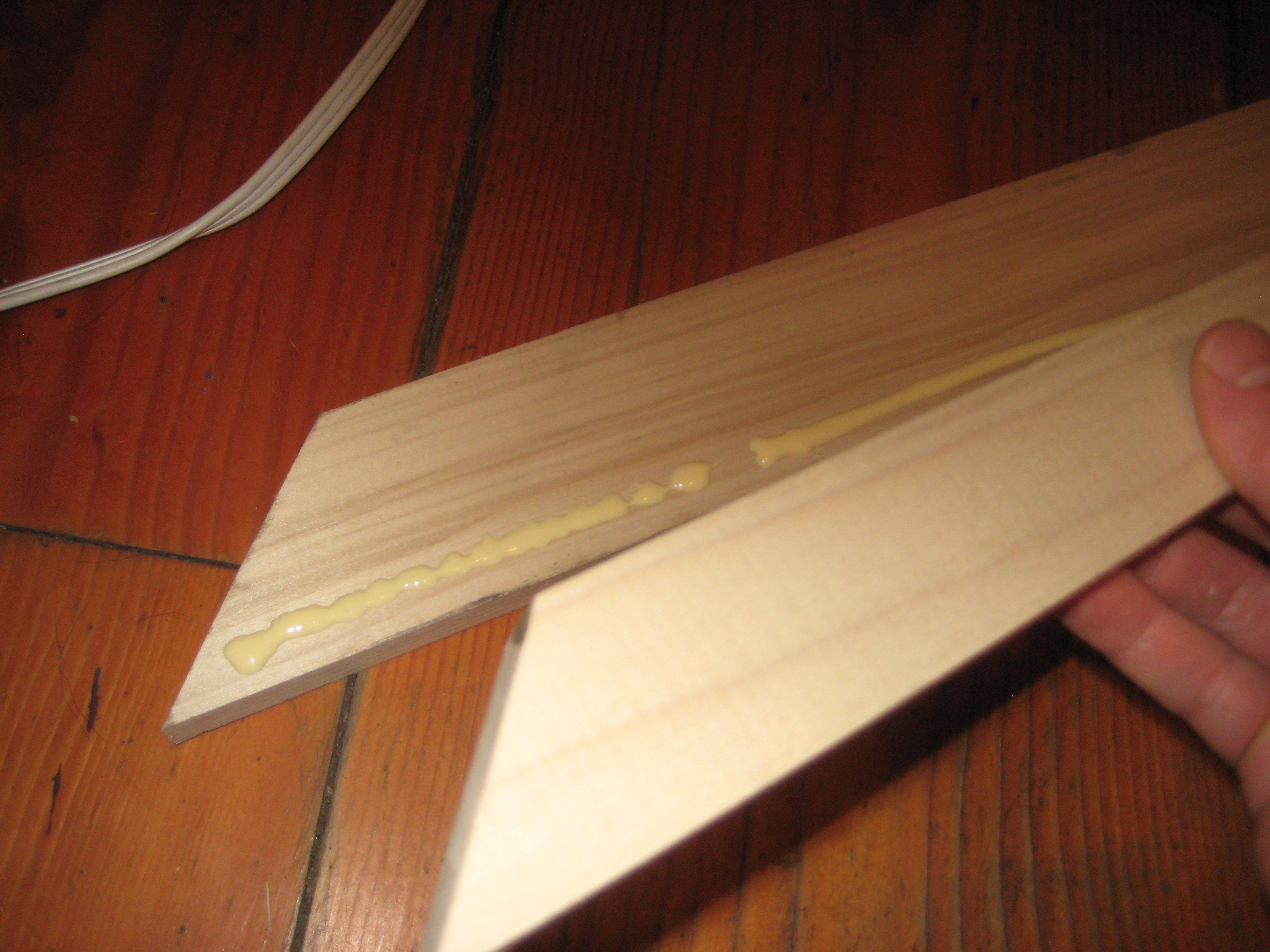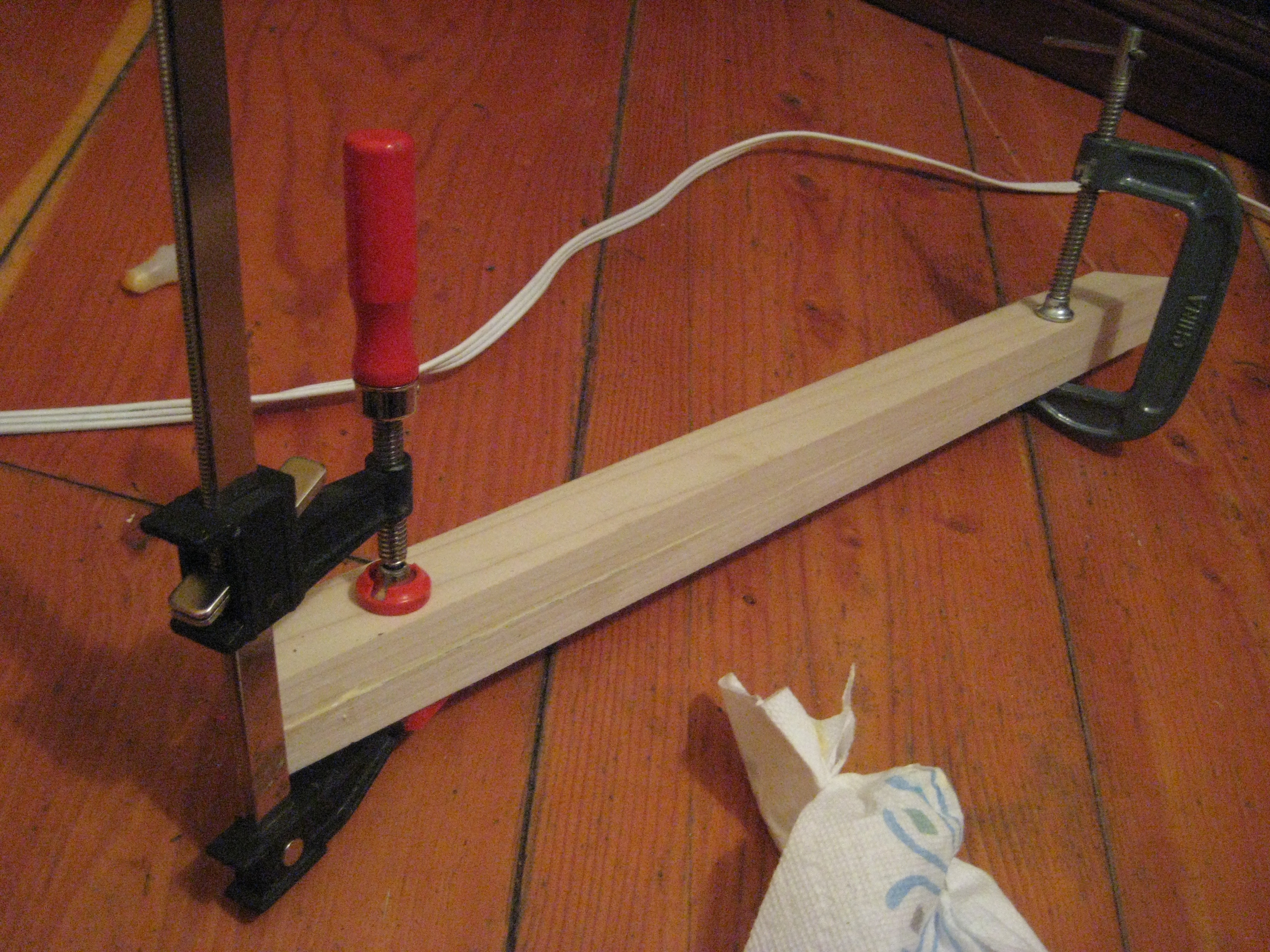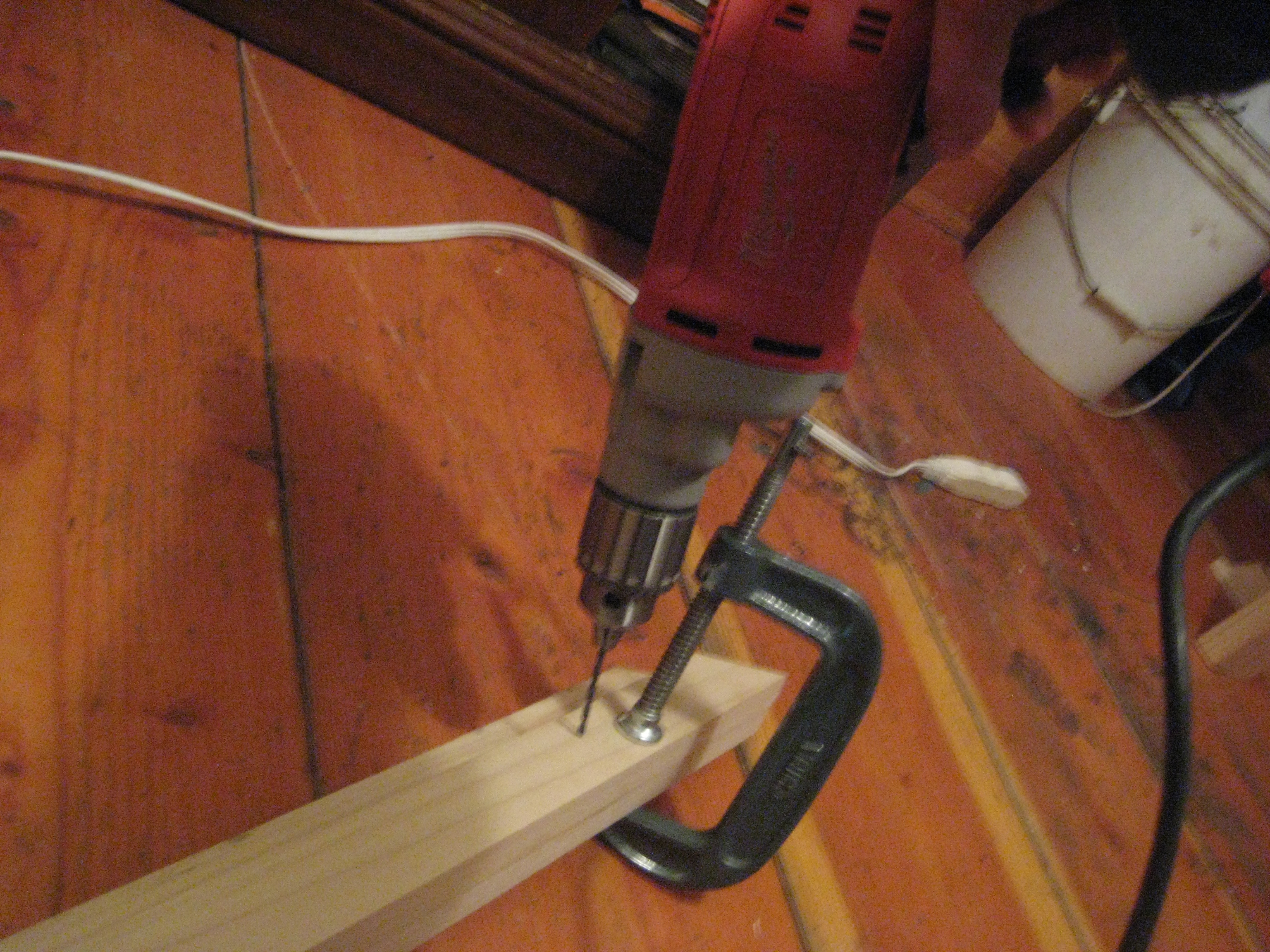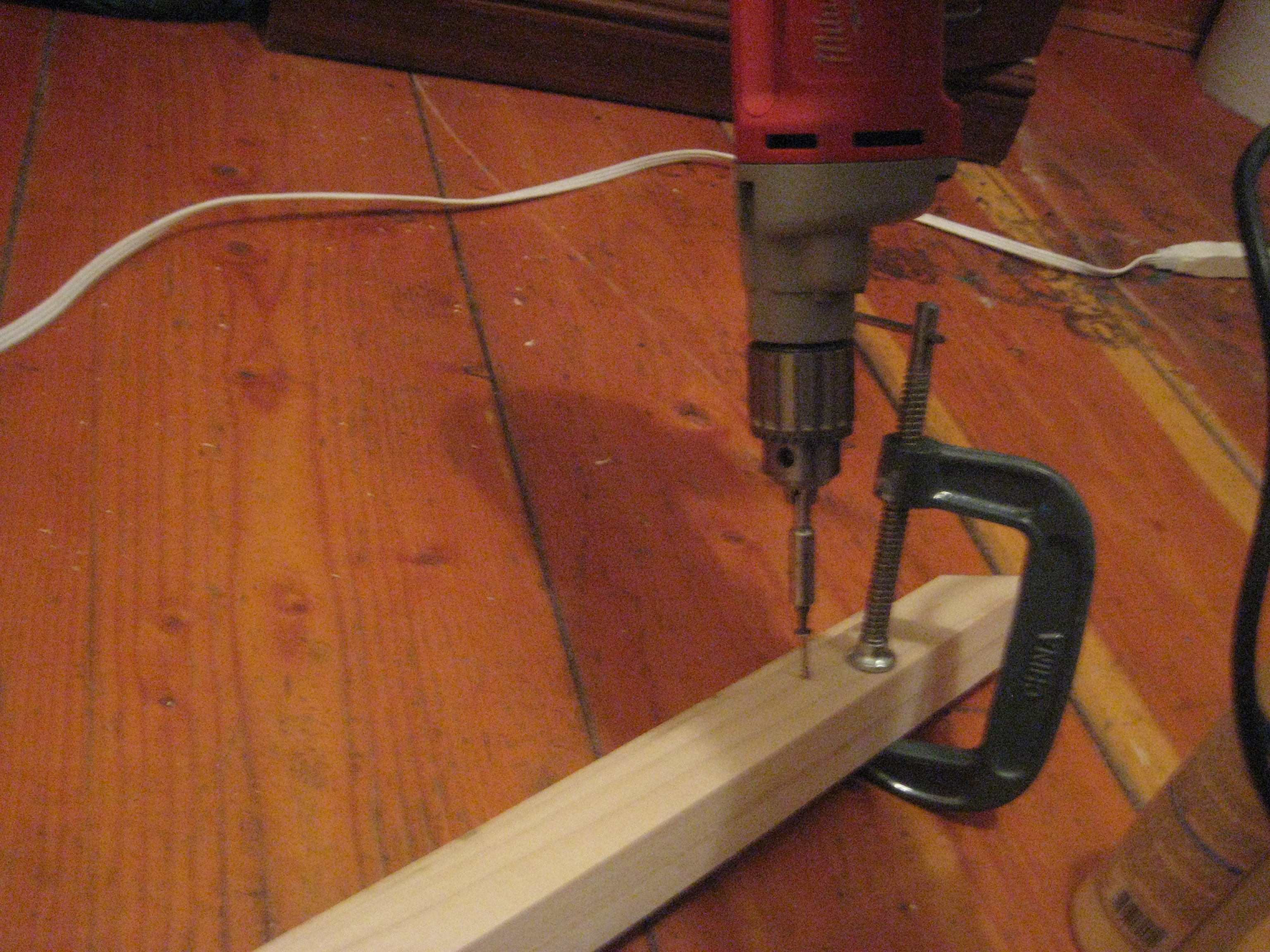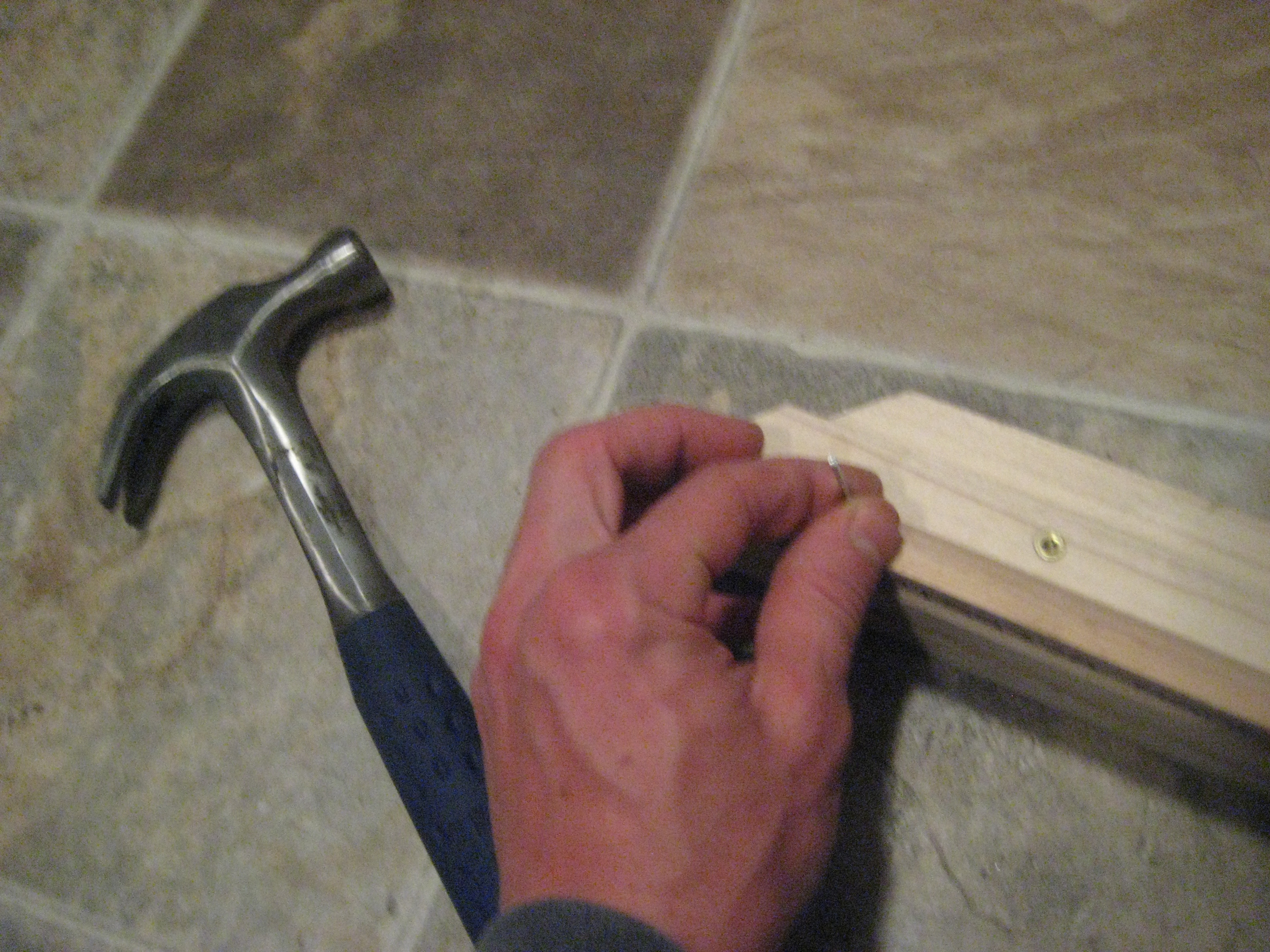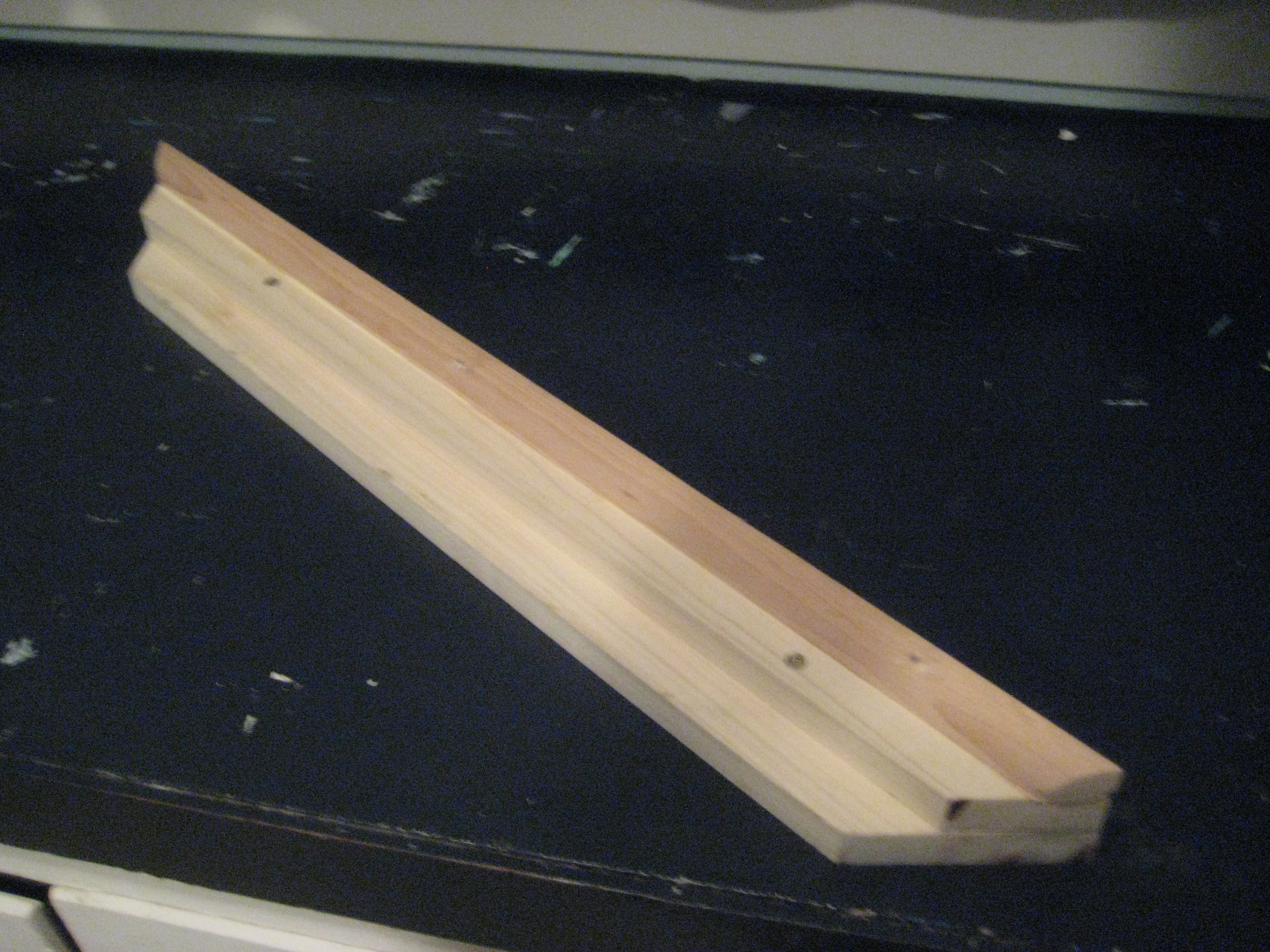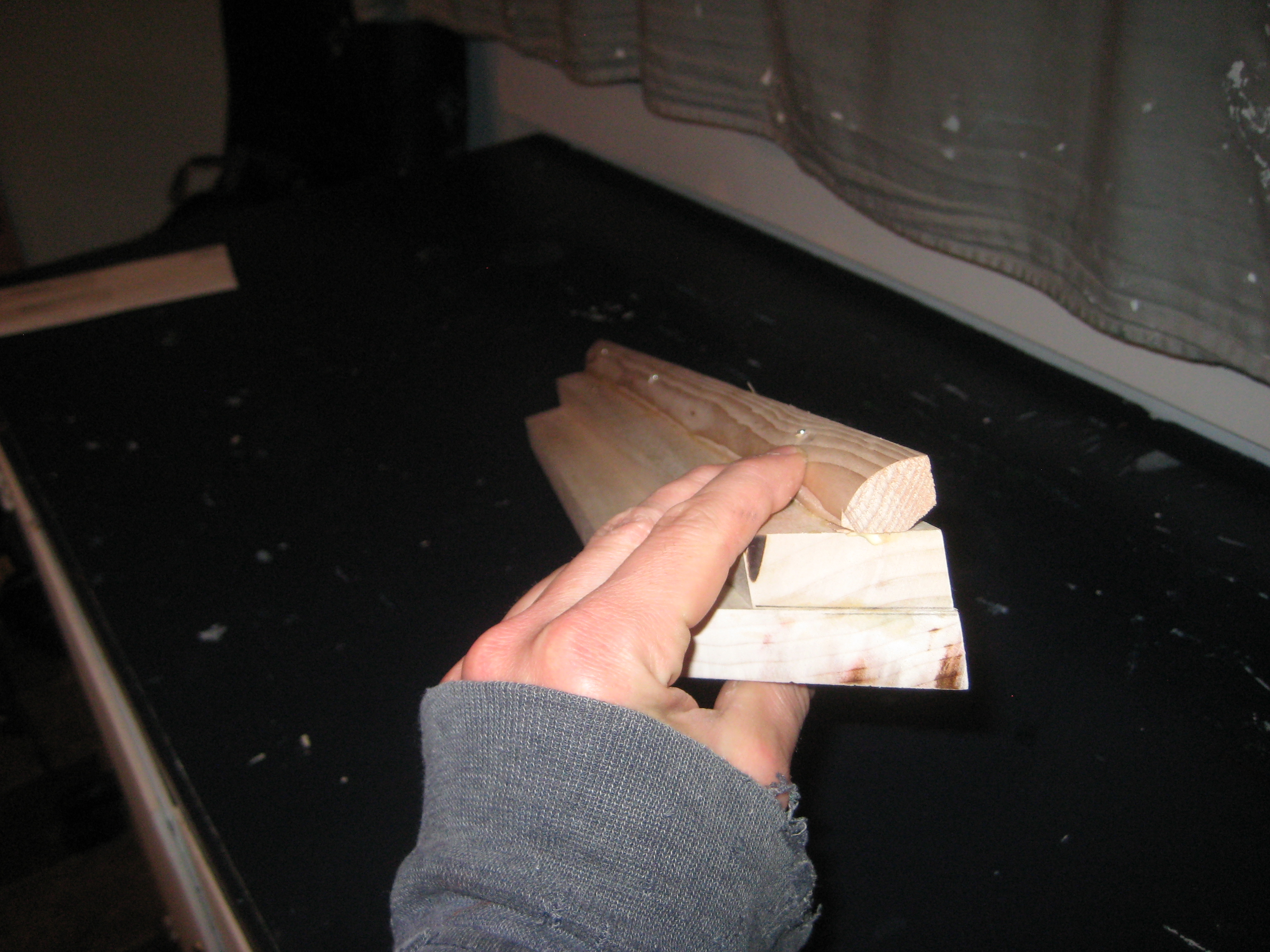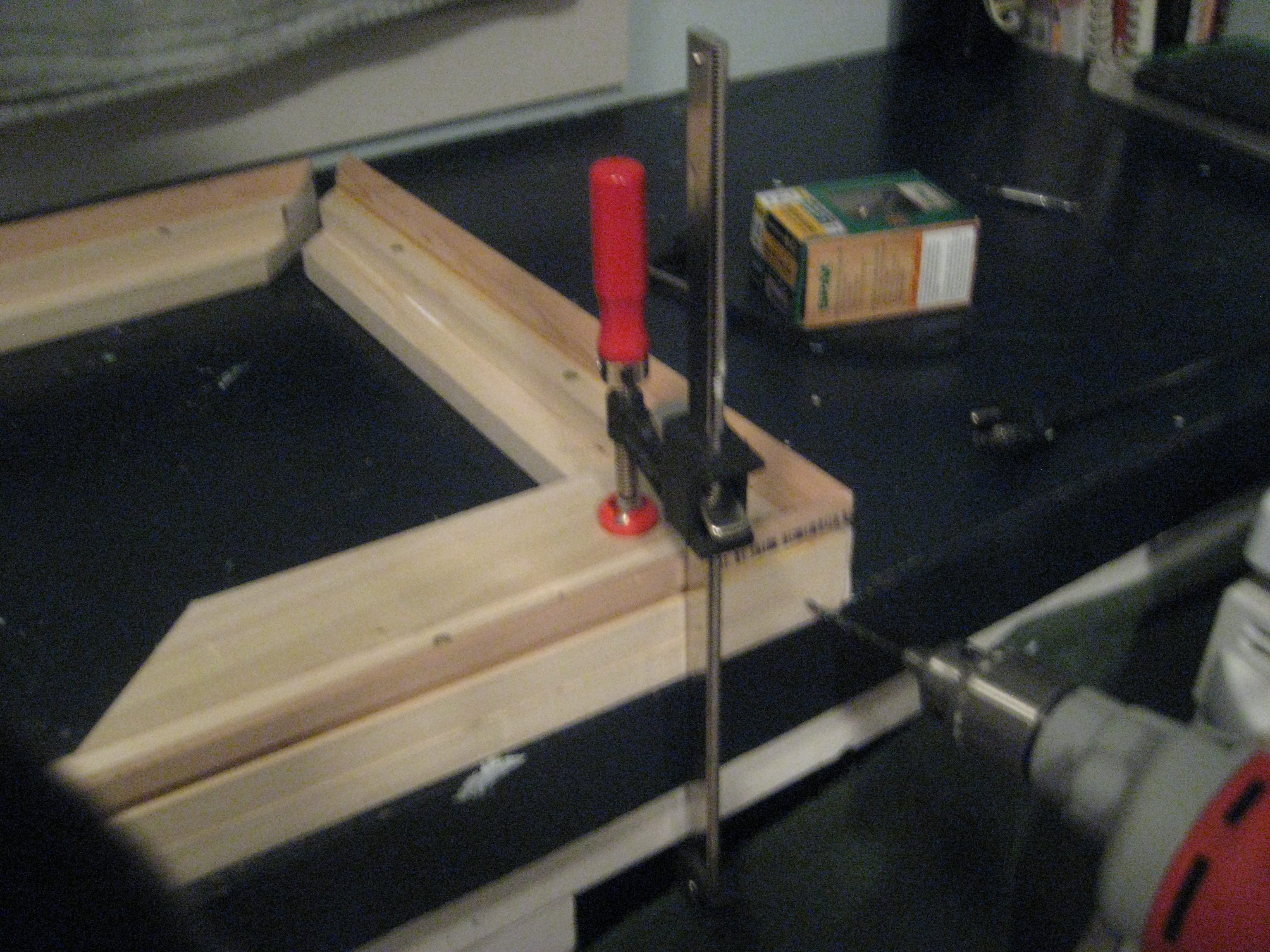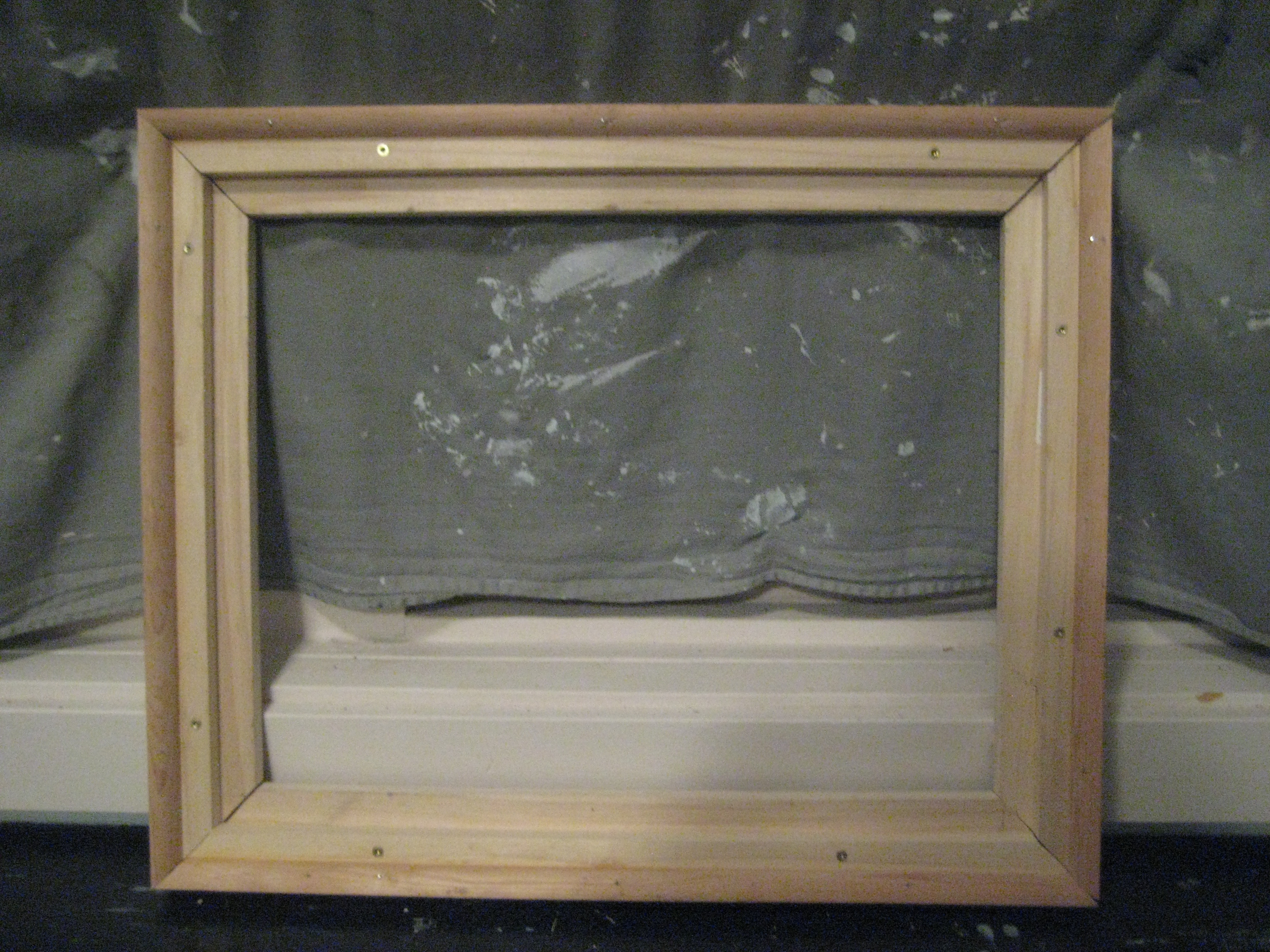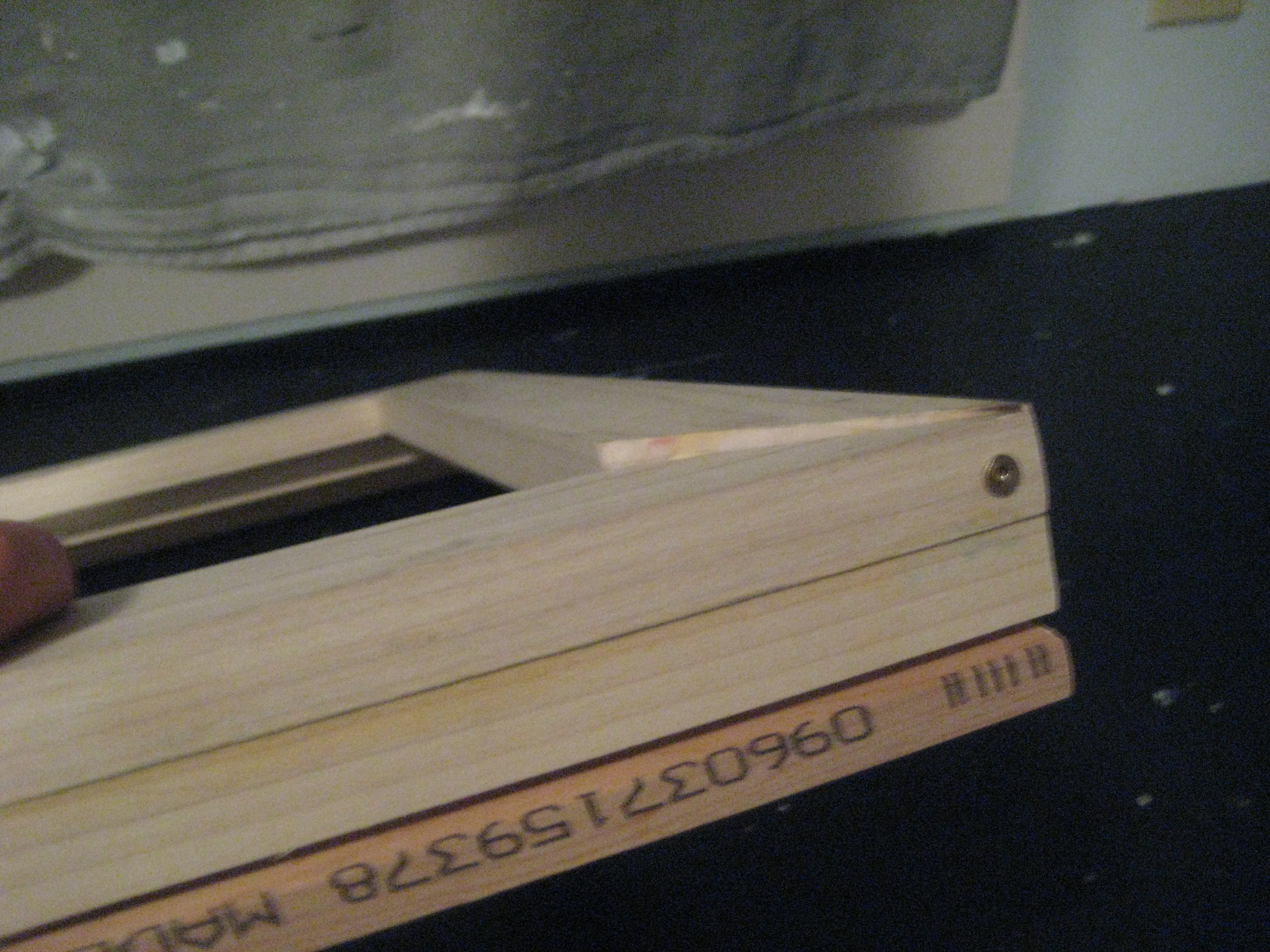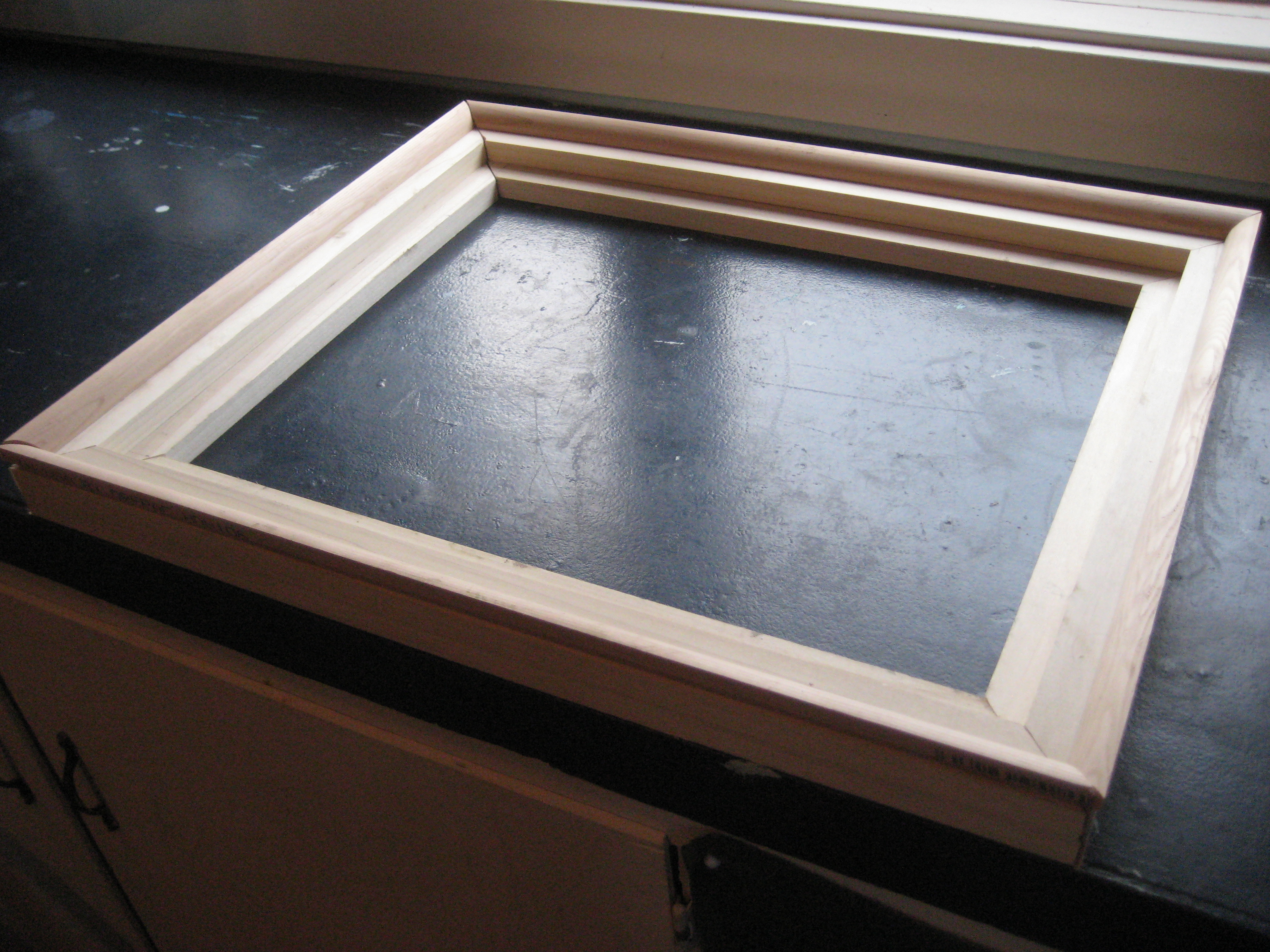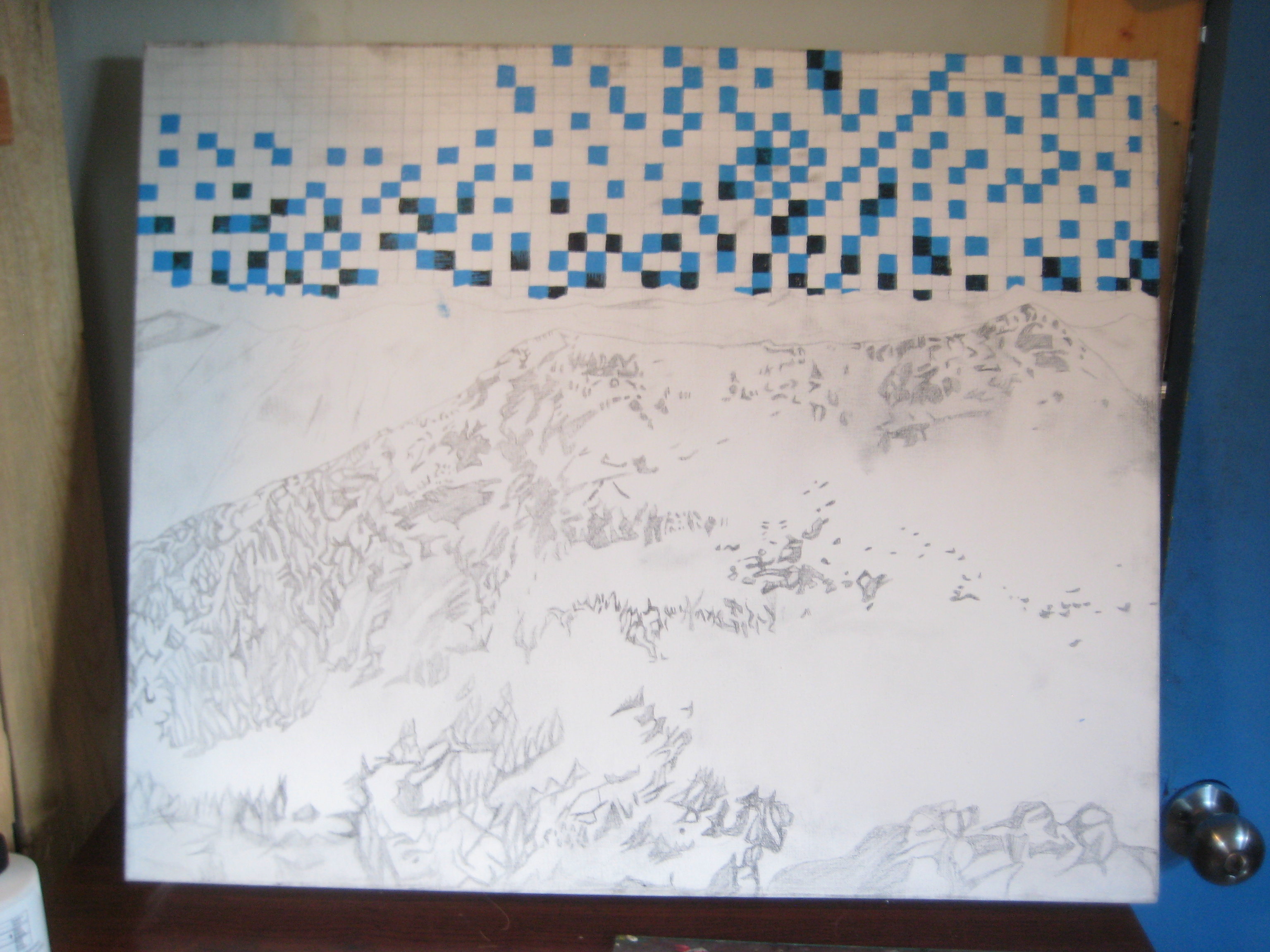It is important to have good structure in your canvas base. I learned this method from one of my professor’s husbands and it is the best I have found, albeit a little pricey. It is worth the coin though because you never have to worry about it warping and it provides a frame that you can paint on.
I start with three different lengths of lumber. One is a wide 1 by piece of hemlock, one is slightly wider, then one is a piece of quarter round.
I then cut these at forty five degree angles for the corners of the canvas frame. Ideally I would use a chop saw, but a speed square and a skillsaw works just fine. I have made these with a handsaw before. Trust me don’t do that, unless you have a nice handsaw and want a challenge. Measure your outside lengths before cutting to get the dimensions for the border.
Glue then clamp.
Wipe off excess glue.
Reinforce the bond with screws. Drill pilot holes to avoid splitting the wood.
Use a screw that is deep enough to penetrate the top piece but shallow enough so that it doesn’t go all the way through.
Attach the quarter round to the outside edge of the boards. Use brad nails. This is the hardest part of making the frame. You don’t want the nails to touch the surface of the canvas at all so they have to be set in a little bit. You need to hammer straight into the wood so the nail doesn’t toe out the side.
One finished side. You need to make four of these.
For whatever reason, they make the quarter round where I am from with a beveled edge. It makes it harder to set but it can be done with some practice. Notice where the brad nails are set in the photo. You want the canvas stretched over the top of the quarter round.
I clamp the pieces to my table to hold them in place while I glue and screw the frames together. Use long screws for the corners drilling pilot holes each time.
Finished base ready to be used as a canvas frame.
Sometimes, imperfections are inevitable.
Nicer view of the frame.
For the paintings themselves, I always sketch a drawing on the canvas. This one is quite detailed but sometimes I like the guidance a detailed underdrawing can give me. I layer my paint to add transparency and luminescence. I usually paint with one or two colors of similar hue at the same time.
Hope you liked this tutorial. I will post more pictures of the painting process itself soon. Drop me a line at doctorswain84@gmail.com if you have any comments or questions.

